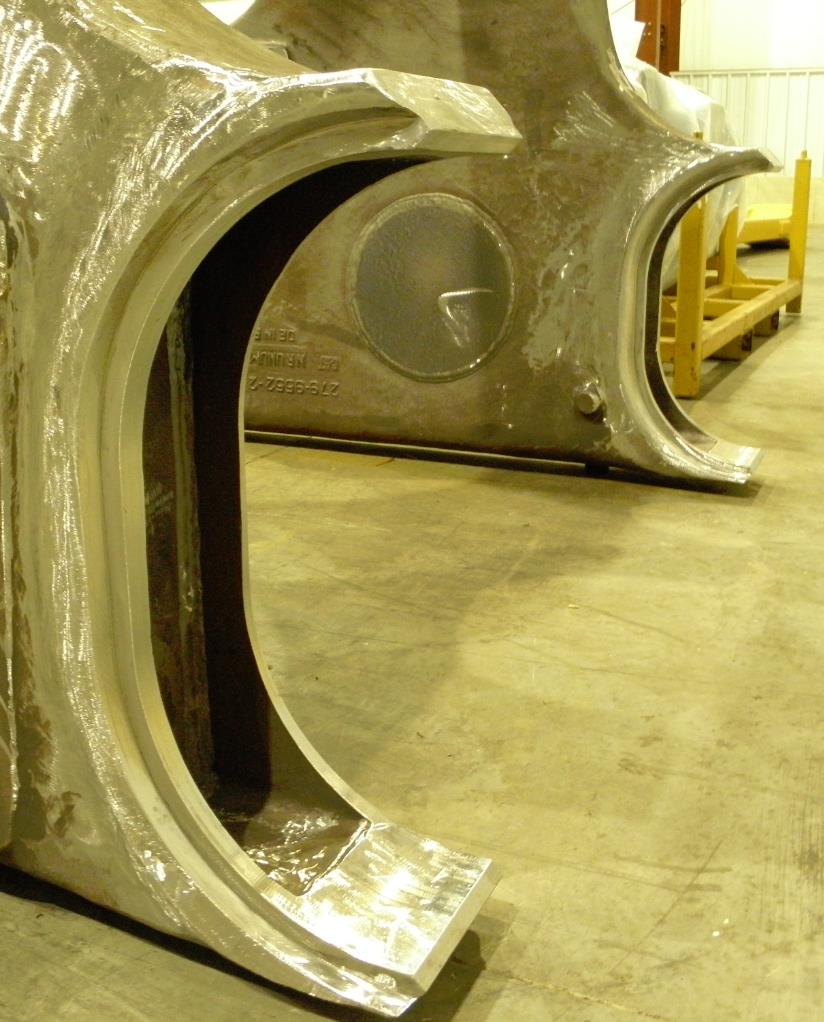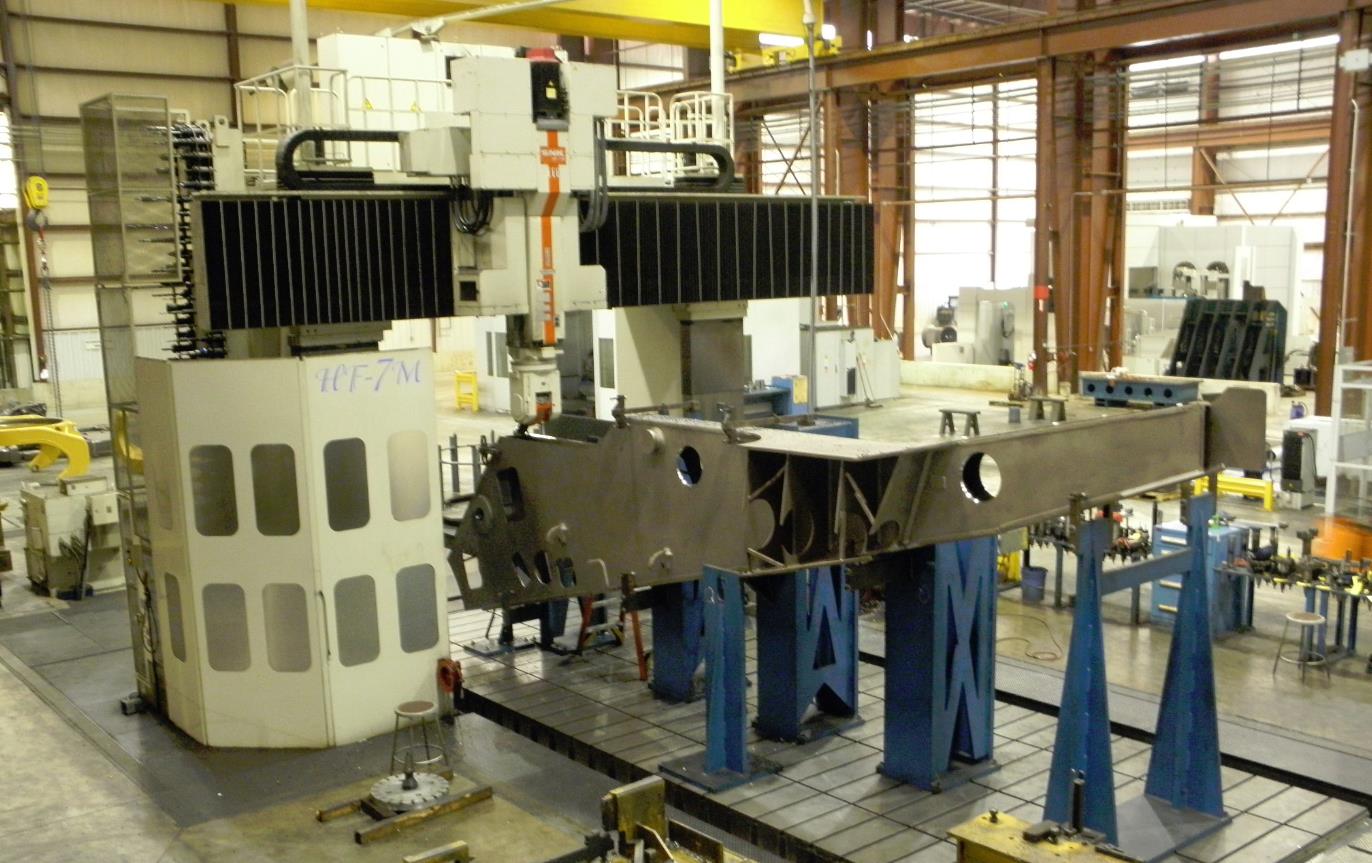Many of the criteria for designing the weld joints for robotic welding apply to designing weld joints for manual welding in large fabrications. According to the American Welding Society weld joints must be repeatable for robotic welding to be successful. The same is true for welding large fabrications. The designer of large fabrications can chose to specify a machined weld joint or the designer can chose a cast weld joint surface on a casting or a plasma, oxyfuel, or laser cut weld joint surface on a plate burnout. Although a machined joint surface will increase the cost of a component, the savings in weld rework, rejection, and potential weld failure more than pays for the added cost. For large fabrications, large machining is required to produce the machined weld joint surfaces.
A large top level fabrication is typically made up of several smaller fabrications. These smaller fabrications can be 20 feet long with a fabrication tolerance of plus or minus 1/8 inch. When a fixture is used to locate these fabrications to each other the variation between the weld joint faces can vary plus or minus ¼ inch, or a range of ½ inch. A gap of less than zero is not allowed, so the gap can be as large as ½ inch. This is not a feasible condition for welding.
Robotic welding technology exists to overcome variation in the location of the welding joint. These technologies include touch sensing, through-the-arc tracking and vision systems. All of these systems are available proven technologies that are available for a cost. The one aspect of weld joint variation these systems do not overcome is the case of a large weld gap. The consequences of a large gap can be undersize welds, poor fusion, or inability to complete the weld. This translates into increased welding time, weld repair time, or poor quality welds. All of these consequences are costly. There is an alternative that greatly reduces the weld joint surface variation and eliminates the large weld gap. That alternative is to machine the weld joints on the large fabrication. Picture 1 shows a machined weld joint on a fabrication composed of two castings. Picture 2 shows a 20 foot long fabrication fixtured in a Large Vertical Gantry Mill for machining of all weld joint surfaces in a single setup.

Picture # 1 – Machined Weld Joint

Picture # 2 – Machine All Weld Joint Surfaces on 20 Foot Fabrication
The concept of using machined weld joints on large fabrications involves the specification of location and profile of the weld joint surfaces in relation to datums that are identified on the fabrication. These datums are used to locate the fabrication or casting for machining and the same datums are used to locate the fabrication or casting for final fit up and welding at the top level of the fabrication. Profile tolerances of plus or minus 0.002 inch are achievable with modern machining equipment. This will yield a variation of plus or minus 0.004 inches in the fit up of two weld joint surfaces. The potential gap is 0.008 inches. Compare this to the potential 0.5 inch gap on a joint that is not machined.
Weld joint surface designs may be at compound angles to the datums on the fabrication or casting. Machining equipment with right angle and/or universal heads will be required to produce the required weld joint geometry economically. This is done by machining all weld joints on a fabrication or casting in a single setup. The single setup also reduces the variation between weld joints on the same fabrication or casting.
K&M Machine-Fabricating Inc. has several large horizontal boring mills and large vertical gantry mills that are used to machine weld joint surfaces on large fabrications and large castings. View a video of large machining of weld joint surfaces on K&M Youtube channel.